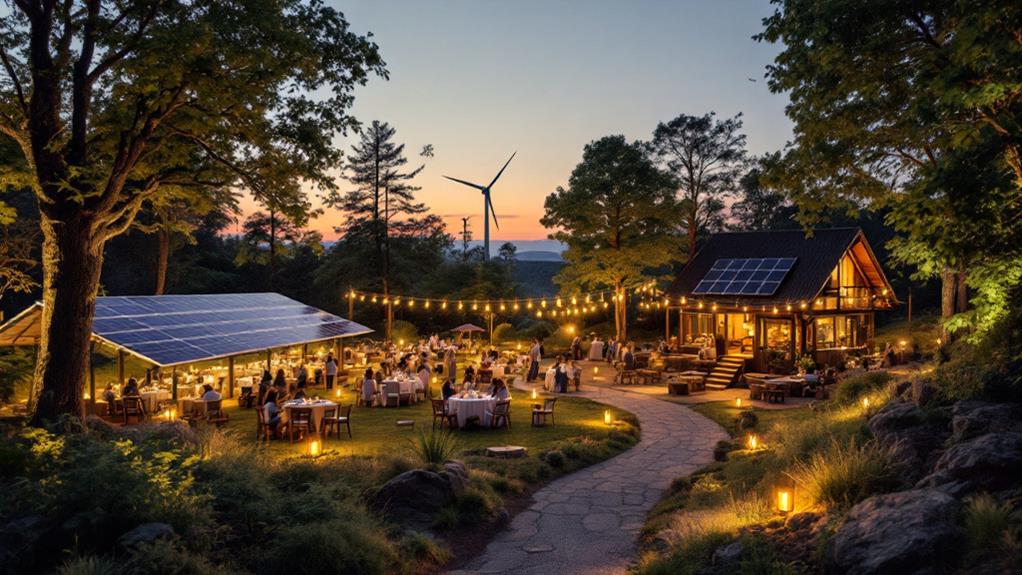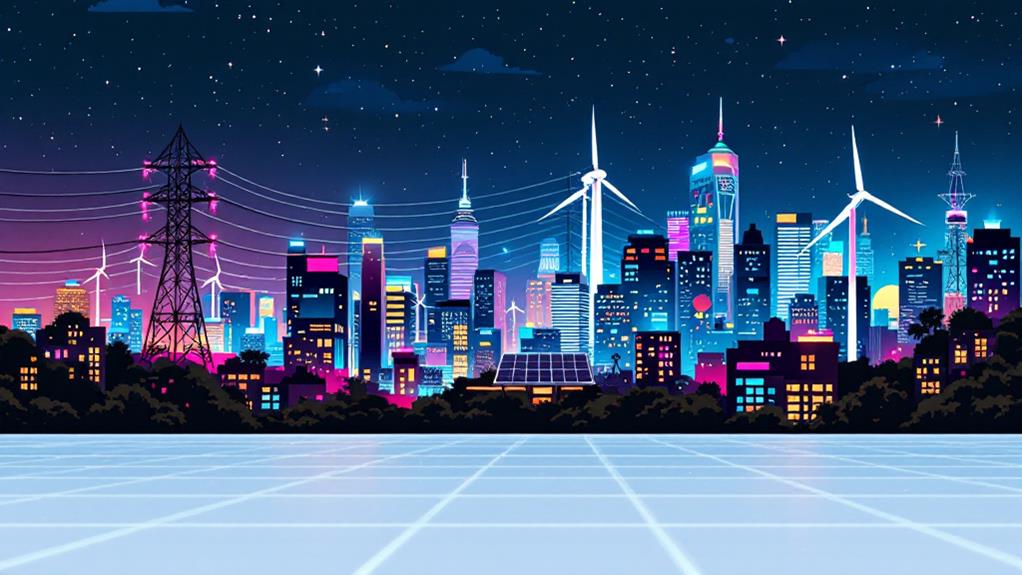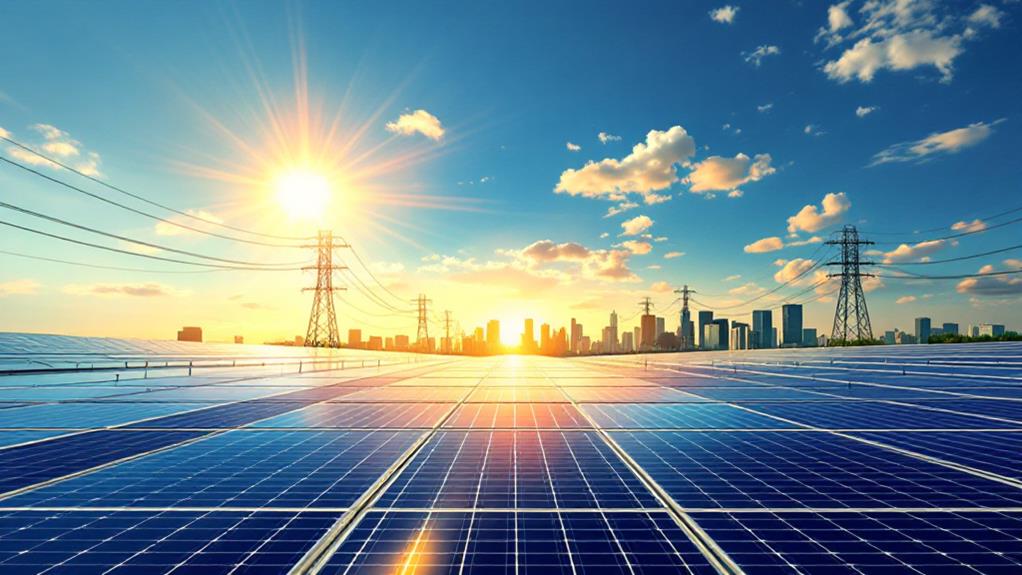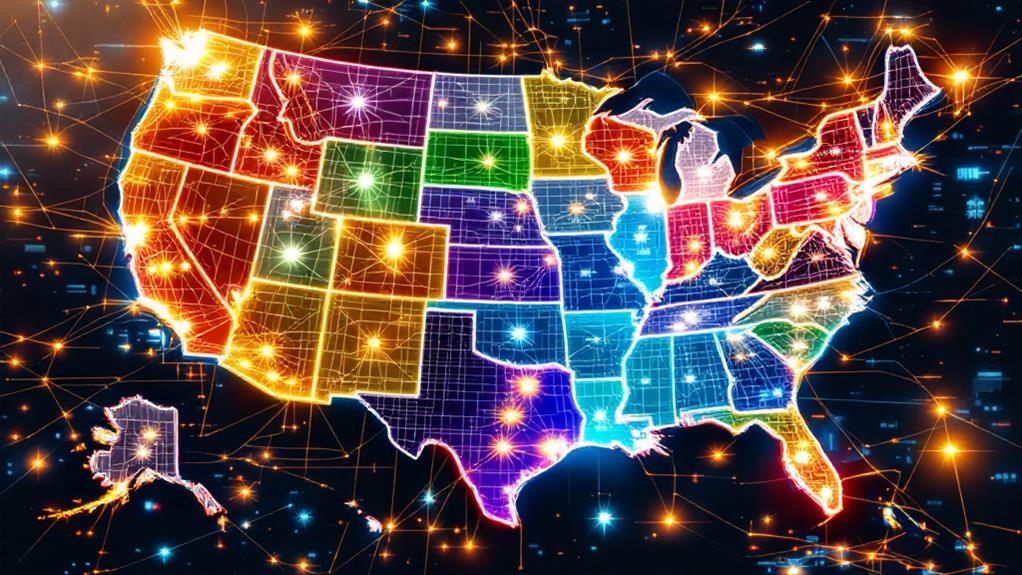How Does the Electric Grid Work? Understanding the Backbone of Energy Distribution
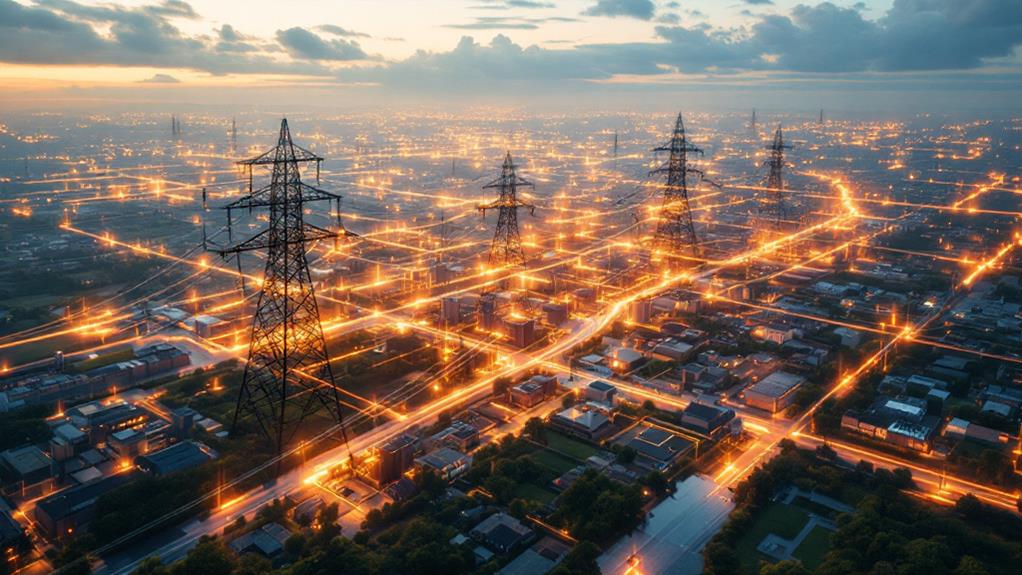
You're part of a complex system every time you flip a light switch. The electric grid connects power generation from diverse sources like hydroelectric, nuclear, solar, wind, and fossil fuels. Transmission lines carry high-voltage electricity across vast distances before reaching substations. Here, transformers adjust voltage levels for safe distribution to homes and businesses. Smart technologies and energy storage solutions keep the grid efficient and stable by balancing supply and demand. Efforts to integrate renewable energy and improve security are shaping the grid's future. Understanding each component reveals how electricity reliably arrives at your fingertips every day. There's much more to explore.
Components of the Electric Grid
An electric grid is composed of three main components: generation, transmission, and distribution. These elements form the backbone of grid infrastructure, guaranteeing electricity reaches your home efficiently. Energy efficiency is key in this process, minimizing losses from generation to consumption. Transmission lines carry high-voltage electricity over long distances, while smart technologies improve the grid's ability to monitor and control power flows, enhancing reliability and flexibility.
With grid resilience becoming increasingly significant, especially in the face of weather-related disruptions or cyber threats, integrating advanced systems guarantees a stable and secure energy supply. Modernizing the grid involves updating components and incorporating energy storage solutions to balance supply and demand. This modernization not only supports grid resilience but also reduces environmental impacts by enabling cleaner energy integration.
Regulatory frameworks play a vital role, setting standards for safety, reliability, and efficiency. These regulations guide how the grid adapts to new technologies and demands. As you navigate grid modernization, it's vital to take into account these frameworks to optimize performance and sustainability. Understanding these components and their interactions helps you appreciate the complexity and significance of a well-functioning electric grid in our daily lives.
Power Generation and Sources
Power generation is the heartbeat of the electric grid, converting varied energy sources into electricity. You rely on numerous methods to meet the energy demands of daily life. Hydroelectric power harnesses the force of flowing water, often from dams, to spin turbines and generate electricity. Nuclear energy, on the other hand, uses nuclear reactions to produce heat, which is then used to generate power. Solar panels capture sunlight and transform it directly into electricity, providing a renewable and clean option.
Wind turbines convert wind energy into electricity by using large blades to drive generators. Geothermal sources tap into the Earth's internal heat to produce power, offering a consistent and sustainable energy form. Biomass energy involves burning organic materials, like wood or agricultural waste, to create heat and electricity. Fossil fuels, such as coal, oil, and natural gas, remain significant contributors to power generation, despite their environmental impact.
Energy storage plays a vital role in balancing supply and demand, ensuring that power generated from these varied sources is available when needed. With these technologies, you help create a reliable and efficient electric grid, fundamental for modern life.
Transmission and Distribution Networks
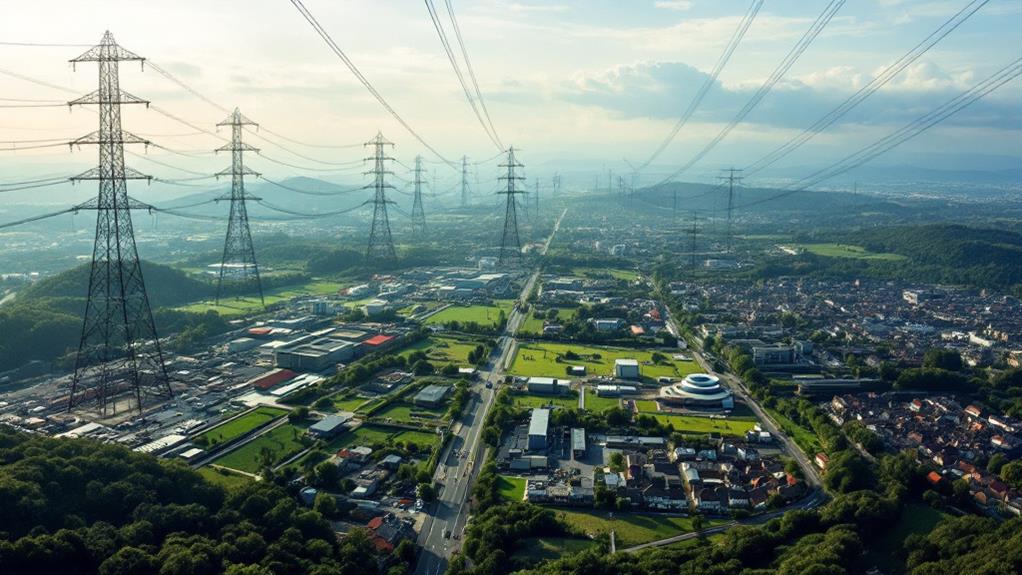
While power generation sets the stage, it's the transmission and distribution networks that guarantee electricity reaches your home and workplace. These networks act as highways, moving electricity from power plants to you. With the rise of smart grids, this process becomes more efficient and adaptable. Smart grids use technology to monitor and manage electricity flow, improving grid resilience by quickly responding to changes or disruptions.
Energy storage plays an essential role in maintaining balance, storing excess energy during low demand and releasing it during peak times. Demand response systems adjust electricity use based on real-time conditions, ensuring ideal energy distribution and preventing overloads. Grid interconnection allows different regions to share resources, enhancing reliability and reducing the risk of outages.
Decentralized generation, such as solar panels and wind turbines, contributes to local energy supplies, reducing dependency on large power plants and enhancing grid flexibility. But with increased interconnectivity and reliance on technology, grid cybersecurity becomes critical to protect against cyber threats that could disrupt the system. Outage management systems quickly detect and resolve issues, minimizing downtime and ensuring continuous power delivery. Together, these elements work to create a robust and efficient transmission and distribution network.
Role of Substations and Transformers
Substations and transformers are vital components in the electric grid, guaranteeing that electricity reaches you at the correct voltage levels. Substation functions include receiving high-voltage electricity from power plants and modifying it to suitable levels for distribution. They act as hubs, routing electricity to different destinations, and play a significant role in maintaining the grid's reliability and efficiency.
Transformers are key in this process. They come in diverse transformer types, each designed to handle specific tasks. Step-up transformers increase voltage levels to facilitate long-distance transmission, reducing energy loss along the way. Conversely, step-down transformers decrease voltage levels, making electricity safe for use in homes and businesses. Without these devices, the electricity that powers your lights, appliances, and gadgets wouldn't be usable.
You might not realize it, but the efficiency of substations and transformers directly impacts the quality of your electricity supply. They guarantee that you experience minimal disruptions and that your power remains stable. As you flick on a light switch or charge your phone, these components work tirelessly behind the scenes, adapting and delivering electricity safely and efficiently, highlighting the importance of their roles within the electric grid.
Balancing Supply and Demand
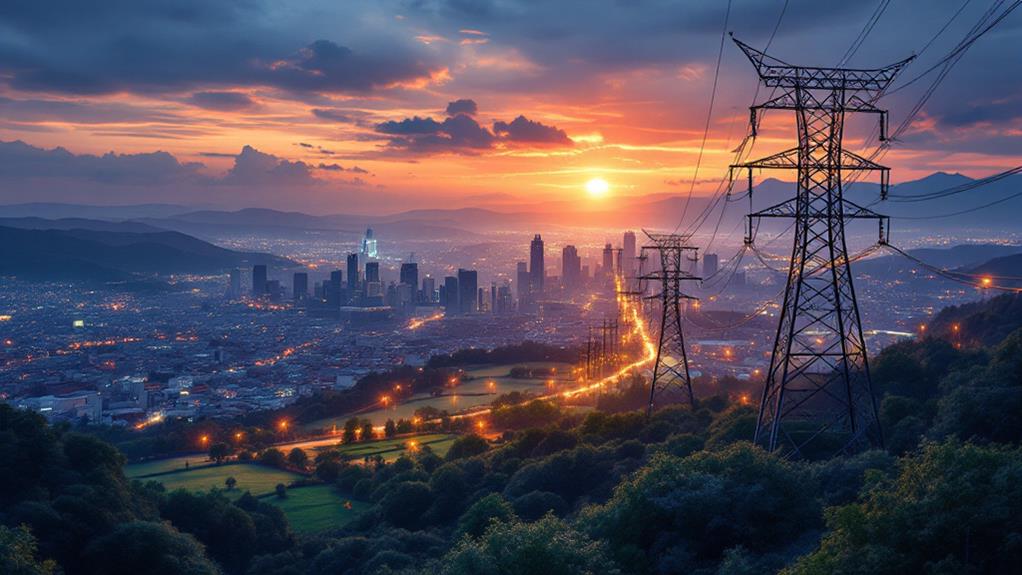
To guarantee the electric grid operates smoothly, balancing supply and demand is fundamental. You play a significant role in this delicate balance through your consumer behavior. When you adjust your electricity usage, especially during peak times, you help maintain grid stability. Demand response programs encourage you to shift your energy consumption, which aids in peak shaving and reduces strain on the grid.
Accurate load forecasting is another important component. Utilities rely on real-time monitoring and sophisticated algorithms to predict electricity demand. This helps them prepare for fluctuations and guarantee a steady supply. By understanding these patterns, utilities can improve grid flexibility and respond to changing conditions swiftly.
Energy storage also plays a significant role. By storing excess energy during low demand periods, it can be released when demand surges. This stored energy acts as a buffer, improving the grid's reliability.
Market dynamics affect how energy is distributed and priced. As demand shifts, so do prices, influencing both producers and consumers. Understanding these dynamics can help you make informed decisions about your energy usage. Together, these strategies guarantee a balanced, efficient grid that meets everyone's needs.
Integrating Renewable Energy
Integrating renewable energy into the electric grid is a significant step towards a sustainable future. You need to understand how smart grids play a fundamental role in this transformation. By using advanced communication and automation technologies, smart grids allow for better demand response and grid resilience. This means that when you introduce renewable integration, the grid can handle fluctuations more effectively, guaranteeing a reliable power supply.
Grid modernization is critical for accommodating distributed generation sources like solar panels and wind turbines. These sources can be spread across multiple locations, making it necessary to upgrade infrastructure for efficient management. Microgrid technology can help you create localized energy systems that operate independently or in conjunction with the main grid. This improves grid resilience and allows for seamless renewable energy integration.
Energy storage solutions, such as batteries, are important in stabilizing the grid by storing excess energy from renewables for later use. This guarantees that energy is available even when the sun isn't shining or the wind isn't blowing. By focusing on these strategies, you can effectively integrate renewable energy, paving the way for a cleaner, more sustainable electric grid.
Challenges Facing the Grid
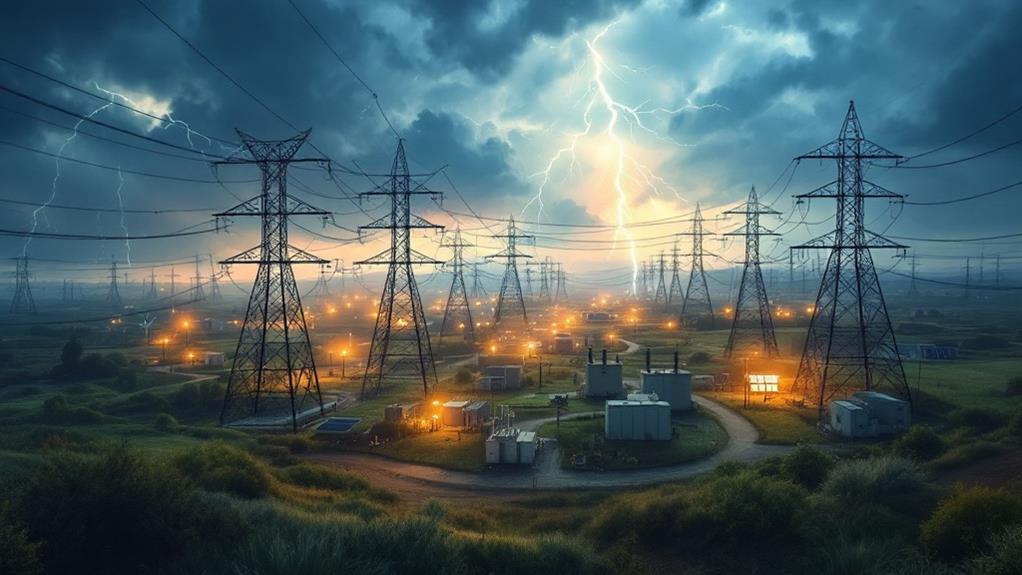
Steering through the complexities of the electric grid reveals a web of challenges that can't be ignored. Initially, grid cybersecurity is essential as threats from hackers grow more sophisticated, aiming to disrupt power supply. It's critical to bolster defenses against these cyber threats to guarantee a reliable energy flow. Then there's aging infrastructure. Many components of the grid are decades old, leading to inefficiencies and increased outages, demanding urgent upgrades.
Regulatory challenges also play a significant role. Maneuvering the maze of regulations at federal, state, and local levels can hinder progress and innovation. Meanwhile, emergency preparedness is key to responding swiftly to natural disasters or technical failures, minimizing downtime and maintaining public safety.
Demand response programs are vital to balance supply and demand, especially during peak times. These programs can prevent grid overloads and reduce energy costs. Energy equity, guaranteeing fair access to energy for all communities, remains an ongoing struggle. Finally, embracing technological innovations offers potential solutions but requires careful integration to avoid exacerbating existing issues. Addressing these challenges demands a concerted effort from policymakers, industry leaders, and the public to guarantee a resilient and equitable grid.
Future of Energy Distribution
While addressing the current challenges of the electric grid, it's just as essential to look ahead at the future of energy distribution. You'll notice a shift towards smart grids, which integrate digital technology to improve grid efficiency and reliability. These grids can quickly respond to changes in energy demand, known as demand response, ensuring that energy is used more efficiently.
Energy storage systems, like advanced batteries, will play a significant role. They help store excess energy from renewable sources, making power available when you need it, even when the sun isn't shining or the wind isn't blowing. Microgrids, which are small-scale power grids that can operate independently, add another layer of grid resilience. They're particularly useful during emergencies, providing backup power when the main grid fails.
Electrification trends are also transforming how energy is consumed, especially with electric vehicles and decentralized generation from sources like solar panels. This shift requires grid modernization to better accommodate varying energy inputs and outputs. As the grid evolves, you'll see a more robust, efficient, and sustainable energy distribution system, capable of meeting future demands and challenges head-on.
